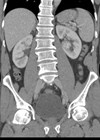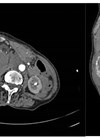Features
Onco-fertility: a review
Subfertility or infertility is a major problem affecting men diagnosed with testicular cancer (TC) either due to the disease itself [1], or as a result of management [2]. TC is the most prevalent cancer affecting men of reproductive age [3]....
MRI screening for prostate cancer: a step towards a ‘prostagram’
The UK National Screening Committee has been calling for further research into alternative screening tests for prostate cancer. The committee decided against prostate cancer screening using prostate specific antigen (PSA) testing on the basis that “PSA is still a poor...
Klinefelter’s syndrome
Klinefelter’s syndrome (KF) is the most frequent sex chromosome abnormality with an estimated prevalence of 1 in 500 to 1 in 700 newborn males and 1 in 10 in men with azoospermia. While the majority of cases are an XXY...
Prostate cancer nurse specialist shortage: a view from the coal face
Prostate Cancer UK recently reported that there is an impending crisis for men with prostate cancer, simply because the number of nurse specialists available is insufficient for their needs [1]. Background As has been widely reported, the incidence of prostate...
Burnout: an increasing problem in urology
“What we mean, man,” said Chuck forcefully, “is this: how can we care for patients if nobody cares for us?” – Samuel Shem, The House of God, 1978. Samuel Shem’s (Steven Bergman, MD) satirical novel The House of God, has...
Mechanisms and prevention of catheterisation associated urethral injury (CAUI)
Urethral catheterisation is a common procedure performed by health professionals across different grades and specialties in a variety of clinical settings. An estimated 15-25% of hospitalised patients have a urinary catheter inserted during their inpatient stay and up to 13%...
PREDICT Prostate – individualised, evidence-based estimates of survival and treatment benefit
Earlier this year ‘PREDICT Prostate’ was launched online alongside a high-profile publication in PLOS Medicine. The prognostic model and decision-aid has been designed to inform treatment decision-making among men newly diagnosed with non-metastatic prostate cancer. David Thurtle and Vincent Gnanapragasam...
The conservative assessment and treatment of mixed urinary and anal incontinence in women: a multidisciplinary approach
Mixed urinary incontinence Urinary incontinence (UI) is considered to be a highly prevalent condition; however, depending upon the definitions used, actual reported prevalence rates can vary significantly. The International Consultation on Incontinence (ICI) review [1], reported unadjusted prevalence estimates for...
Modern management of small renal masses
With the advent of widespread cross-sectional imaging there has been a surge in incidental detection of small renal masses (SRMs) and renal cell carcinoma (RCC) is now the seventh most common cancer in the UK. Whilst surgical excision for larger...
Is laparoscopic urological training in Sub-Saharan Africa a goal worth pursuing? Observations from my experience with IVUmed in Senegal
Laparoscopic surgery has developed at an unimaginable pace over the last three decades. The first laparoscopic cholecystectomy was performed by Dr Phillip Mouret in France in 1987, with the first series of 63 cases published in 1989 [1]. However, its...
What exactly is Hinman Syndrome?
Who was Hinman and what is Hinman Syndrome? Frank Hinman Junior (1915–2011) first described ‘Hinman syndrome’ in the 1970s – a condition also known as a ‘non-neurogenic neurogenic bladder’. He was a renowned American urologist, educator and skilful artist and...
A guide to percutaneous nephrolithotomy
Percutaneous nephrolithotomy (PCNL) is now the gold standard approach to treating large renal stones. Since its development in the 1970s, it has undergone a series of refinements that could only have been possible with the symbiosis of both radiological and...















